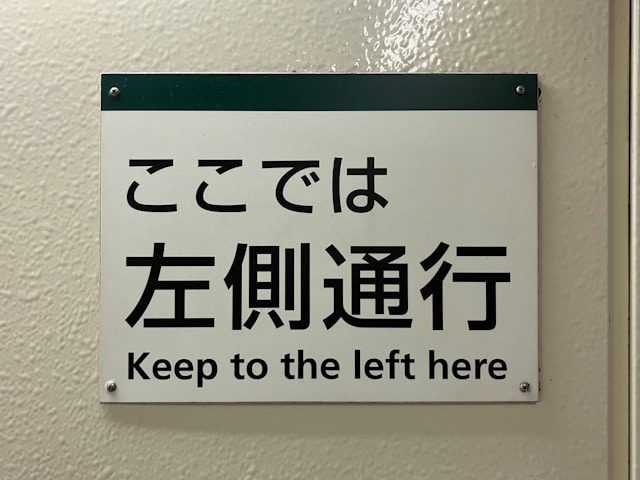Rapid Translate Team
If you want to change your content into another language, translation and localization are two processes you’ll keep hearing about. Although they seem to be the same, they have several differences.
Knowing what sets them apart can explain what you must do for your upcoming projects that require language changes. To begin with, let’s look at the difference between translation and localization.

Table of Contents
Quick Definitions: Translation vs. Localization
Translation is a straightforward process when you convert the provided text into a different language. Both the original language and its translation will have the same meaning. For example, the Spanish translation of orange is naranja.
Localization is the next step in translation. In this process, you adapt the text according to the country’s cultural, linguistic, and social norms. It is a comprehensive approach as you translate the text and other elements.
For example, in the UK, people call french fries as chips and potato chips as crisps. If you’re opening a restaurant in the UK, you need to localize the text to avoid confusion among the locals.
Key Differences Between Translation and Localization
Think of translation as a word-for-word adaptation from one language to another. Of course, you’ll make grammatical and structural changes so the reader understands what you want to convey. So, what is localization in translation?
Localization builds on the translation process to ensure you communicate clearly to native speakers. You’ll make changes in the following areas while adapting the translation to the region’s preferences.
Spellings
Words can have different spellings, even in the same language. For example, it is flavor in US English and flavour in UK English. Or traveler in US English and traveller in UK English.
Meanings
Words can have different meanings, depending on the country. If you say football in America, people will automatically assume you’re referring to American football. However, football in the UK is what people call soccer in the US.
Font Type and Size
When localizing a translation, you must consider the font type and size. For instance, the horizontal spacing between characters for both languages differs when translating English to Japanese.
Compared to English, you need more horizontal spacing between each character for Japanese. Due to this reason, the font type and size you choose affect legibility. This is one of the many factors you need to consider in software localization.
Visual Changes or Website Layout
During localization, you need to change the layout to adapt to the language’s visual changes. For example, Chinese, Japanese, and Korean can be longer than their English counterparts. Due to this reason, your website should have enough space to accommodate the size of these languages. Otherwise, your website’s layout will look off or cluttered.
Date, Currency, and Measurement Formats
Localization accounts for the variations in date, currency, and measurement formats from country to country. For example, you’ll use the imperial measurement system in the US. The currency is in dollars ($), and the date format is mm-dd-yyyy. You use a combination of imperial and metric measurement systems in the UK. Their currency is pounds (£), and the date format is dd-mm-yyyy.
Culture
In the West, red can mean love, danger, and a sense of urgency. However, in China, red refers to luck, good fortune, and happiness. As you can see, even colors have different meanings depending on the culture.
Real-World Example: Translation vs. Localization in Action
Let’s look at real-world examples of localization, as this will clarify the difference between localization and translation.
American English Example: Your order will reach your house by 12-02-2025. The company charges $10 per pound.
How does localization work? You need to make several changes when localizing the above sentences into UK English. The following section explains what does localization mean in translation.
- You’ll change pound to kilogram.
- Similarly, the date format will change from 12-02-2025 to 02-12-2025.
- You also have to use the relevant currency. In this case, $ will become £.
UK English Localization of Example: Your order will reach your house by 02-12-2025. The company charges £10 per kilogram.

When To Use Localization for Your Business
You know the translation and localization meaning. So, when do you use each process? Software localization service makes sense for your business when you want to expand to new markets in foreign countries. The people in these countries communicate in another language and are culturally different from your current market.
You build trust with your new audience through localization, as they can understand your messaging. It shows that you’re paying attention to cultural differences instead of using a one-size-fits-all approach. This, in turn, increases your brand awareness and sales.
For example, you’re launching a new product and expanding from the US to China. In this case, you’ll need to localize all the user manuals to simplified Chinese in mainland China. However, in Hong Kong, you need to use Traditional Chinese.
Similarly, your tagline makes sense in English. However, if you just translate it into Chinese, it may sound disrespectful or out of place. You’ll need to ensure the tagline fits the Chinese culture and norms.
When Is Simple Translation Enough?
A simple translation is enough when you only need the text to be accurate and understandable in another language. For example, you can just translate a product’s user manual word-for-word. A simple translation will work if you need to provide a repair manual or employee handbook in a different language.

Essential Localization Checklist: What Your Project Needs
Here’s a checklist you can use to determine if your project needs localization:
- Ensure the website or document’s layout adapts to the changes in the direction and size of the target language.
- Make sure the date, currency, and units of measurement follow the country’s standard format.
- Change the images and colors to match the country’s cultural practices and beliefs.
- Double-check the slang, tone, and idioms to ensure they make sense in the target language.
- Ensure your customer support in a foreign country communicates with customers in the region’s official language.
- Research the target country’s local trends and use them in marketing campaigns and social media posts.
- Change the shipping address depending on the country. For example, your customers have to select a state in the US and India. However, in Canada, it is provinces and territories.
- Use relevant and localized keywords for search engine optimization (SEO).
Beyond Localization: The Role of Globalization in Expanding Markets
Thanks to the internet, trade policies, and international supply chains, you don’t have to only operate in your home country. You can expand your services to different markets without worrying about language, culture, and location being barriers.
As a result, it’s become the norm to localize all your content to meet the needs of a global audience. This means making it easy for your audience to change your website’s language according to their preferences. It also means using responsive web design and appropriate fonts to ensure the text is readable in multiple languages.
This is the difference between localization and internationalization or globalization.

Scaling Your Website for Multiple Markets: Globalization & Localization
As you expand to newer markets, you’ll need localization to cater to the needs of your growing audience. You’ll need to ensure your website design has a responsive layout that adapts to different languages. All the buttons, text, and call-to-actions look like you designed them from the ground up for the new market.
The icons and colors are region-appropriate, i.e., they don’t convey a different message than you intended. At the same time, you need to be consistent and comply with global regulations.
An easy solution is to use website translation localization services. They’ll handle all localization tasks while you can prioritize what’s important for your business.
How To Balance Translation, Localization, and Globalization for Success
You need to find the right balance between translation, localization, and globalization to ensure you’re ready for new markets. This means knowing which process to use depending on your project’s goal.
You must have a team of locals proficient in the target country’s official language. However, doing everything in-house can be taxing because of the required level of expertise and work. Moreover, it can also be expensive.
With a professional translation service like Rapid Translate, you can rely on experts to help with translation, localization, and globalization. Streamline your project with our translation localization services to ensure it adapts to more than 60 languages’ unique needs.
Due to our robust quality checks, you’ll get accurate and reliable translations that your audience will understand. Moreover, our affordable pricing models make using our services cheaper than hiring an in-house translation team.
FAQ
Do you still have any doubts regarding the difference between translation and localization? Go through this section, as it answers questions we regularly receive from our clients.
Can you localize text without translating it?
No, you cannot localize text without translating it if the original content is in a different language. Localization requires translation and is an extension of the translation process.
However, localizing text without translating is possible if it is in the same language. For example, you can localize US English to UK English.
What are the benefits of localization for businesses?
Businesses will experience the following benefits due to localization:
– The target audience will understand and connect with the business’s messaging.
– It fosters brand loyalty, as your audience can see you’re making a significant effort to adapt to their needs.
– It improves sales as your audiences in new markets prefer your websites to be in the country’s official language.
Do you need to localize images?
Yes, you have to localize images to ensure they make sense in the target country. Otherwise, your audience may miss the point, which isn’t good for your business. Moreover, you can also give people the wrong impression due to the color choice in your imagery.
What is localization services?
Localization services are end-to-end translation services that ensure culturally accurate and appropriate translations. Professional translation companies often provide localization in translation services, especially if they have certified translators who are native speakers.





